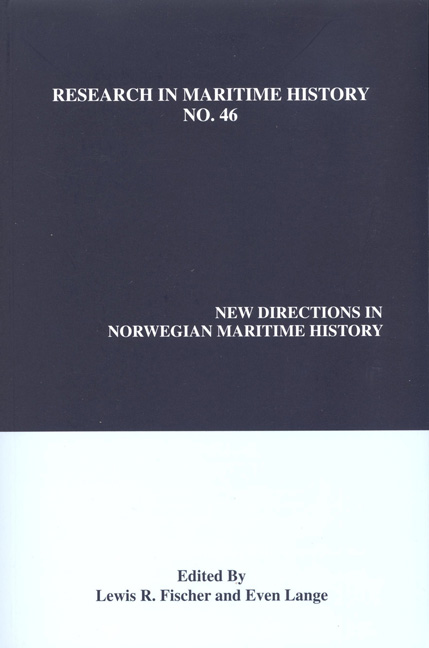“When Distance Matters: The Output of the Norwegian Merchant Fleet, 1830-1865”
from Global Integration
Summary
Introduction
In their reflections on the state of maritime history in Norway, both Atle Thowsen and Helge Nordvik bemoaned the lack of interest by academic historians which, they argued, had left maritime history in the hands of laymen and as a marginal topic in the scholarly community. Slightly more than two decades after Nordvik's article, however, there are signs that this is finally starting to change. This shift can be seen in at least three areas. First, the number of master's and doctoral theses on maritime topics has been rising over the past decade. Second, notable research projects have been anchored within academie institutions. Finally, a new generation of maritime historians has been employed in academic positions at universities and other research institutions.
The extent to which this long-awaited institutional integration of maritime history will be coupled with a historiographical shift to produce a different kind of scholarship remains to be seen. Internationally, the rise of econometrics in general and the globalization debate in particular has attracted a group of scholars with a newfound interest in shipping: the maritime historical economists. While these economists can easily fmd a home among economic historians, traditional maritime historians tend to prefer the company of their own herd, although they do enjoy an occasional flirtation with business historians. The Norwegian community of maritime historians, though, has yet to experience the same antagonism. Maritime history in Norway is still dominated by qualitative, actor- and micro-orientated approaches. Nonetheless, there are a few outliers with an eye for quantitative sources and methods. Thus, rather than taking history out of the equation, new perspectives and increased methodological complexity are brought to the genre through the utilization of new sources, analytical tools and research questions.
This is also the aspiration of this essay. My ambition is to enhance our understanding of the development of Norwegian shipping in the nineteenth century by approaching it from a macro-level and quantitative perspective. More specifically, I ask how Norway's merchant marine was transformed from being based on the domestic economy to becoming a carrier of freights worldwide. Thus, the focus of the analysis will be on the production and spatial distribution of shipping services. This requires establishing new series of historical statistics on the output of the merchant fleet.
- Type
- Chapter
- Information
- New Directions in Norwegian Maritime History , pp. 37 - 56Publisher: Liverpool University PressPrint publication year: 2011

